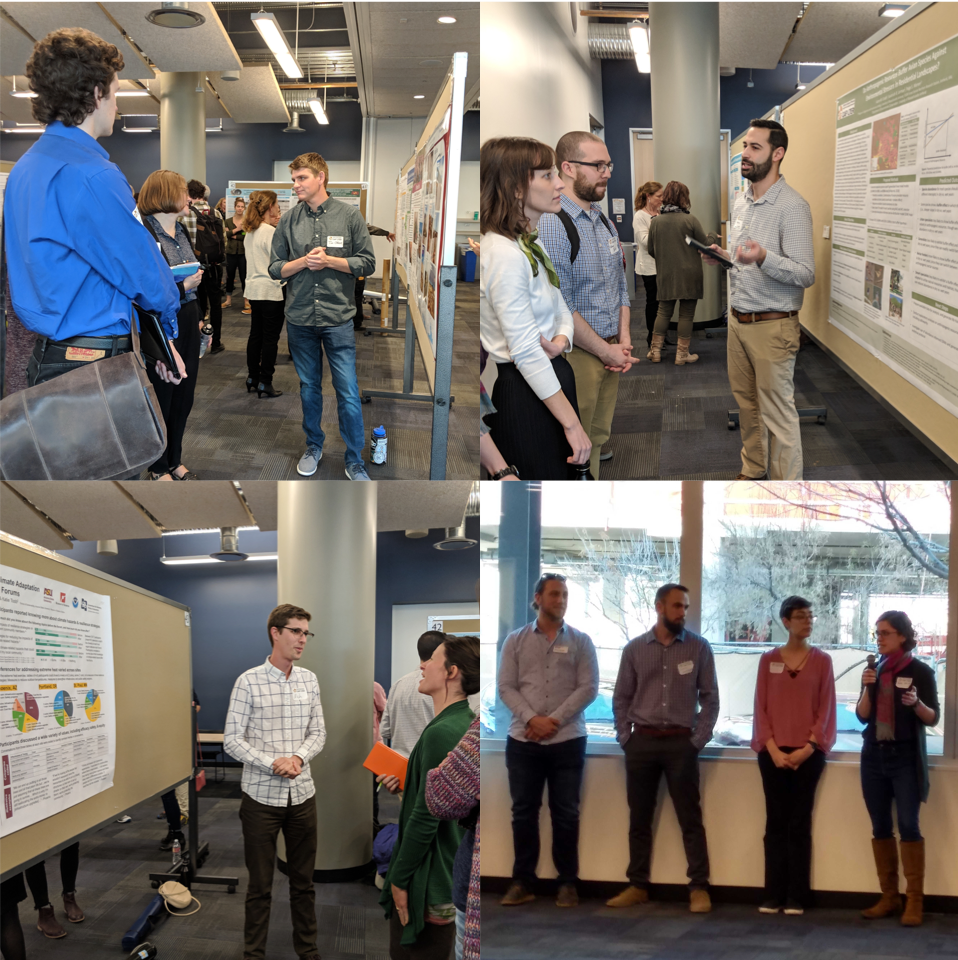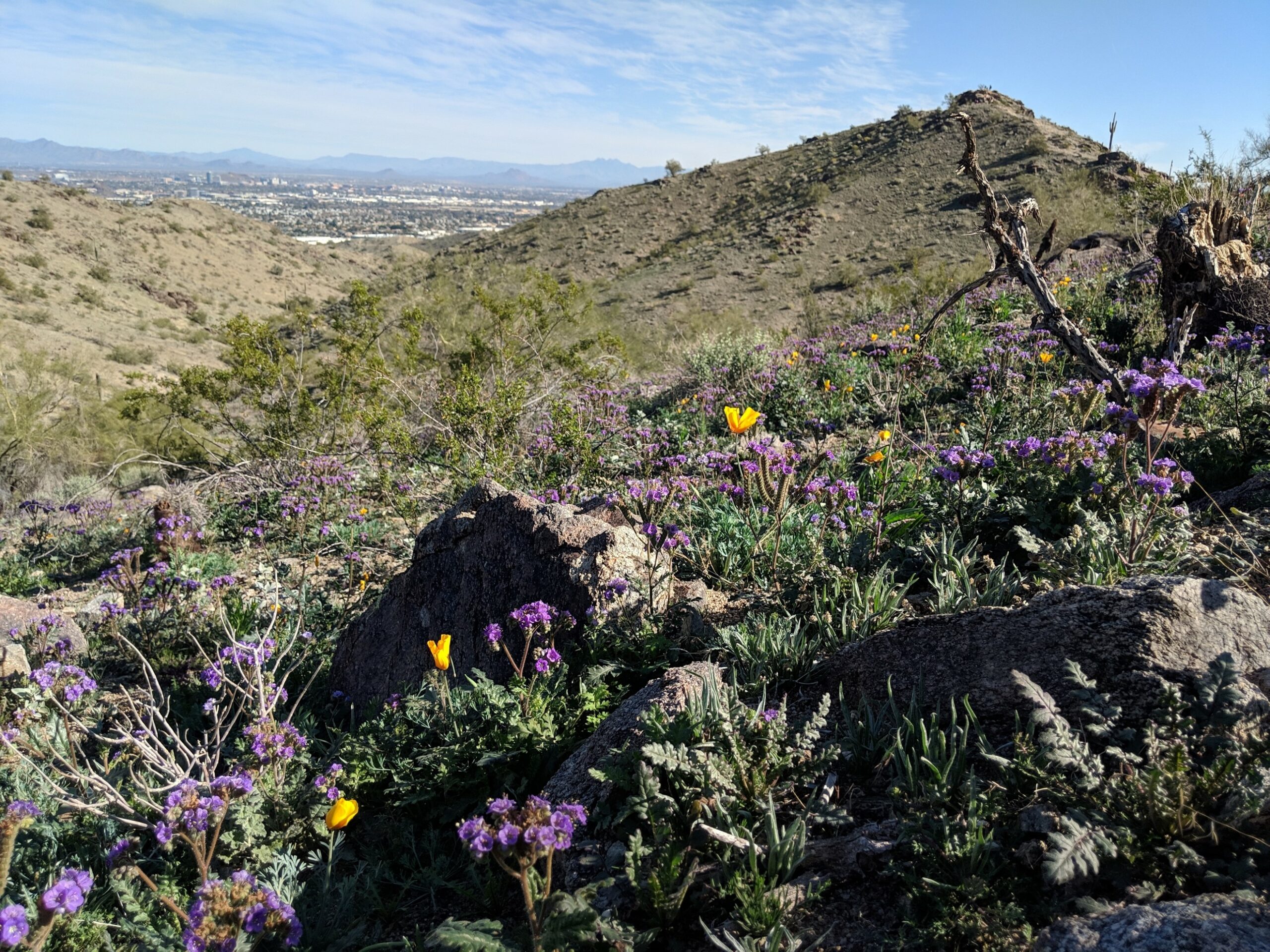by Megan Wheeler, Brian Kim, and Alesia Hallmark
Last October at the LTER All Scientists’ Meeting in Monterey, California the graduate student committee identified between-site relationships as a key component of our mission statement. Building on the momentum from the October meeting, graduate students from the Sevilleta and Jornada Basin LTERs joined the CAP LTER in Scottsdale, Arizona for a regional meetup in conjunction with CAP’s annual All Scientists’ Meeting (ASM).

CAP and Sevilleta students at South Mountain Preserve, with the city of Phoenix in the background.
Credit: Megan Wheeler
The ASM started out with a captivating presentation by Marc Johnson from University of Toronto discussing urban evolution and the story of a ubiquitous weed, white clover. This unassuming plant is capable of cyanogenesis, the production of hydrogen cyanide, in response to herbivory. Work in Johnson’s lab has shown that the genetically-coded ability to perform cyanogenesis varies along an urban to rural gradient, and he unfolded the story of how temperature, region, and snow removal are related to the presence of responsible genes.
The plenary talk was followed by short presentations of different themes within CAP research, ranging from Governance & Institutions with a strong social focus to Water & Fluxes with a biogeochemical lens. Students, faculty, and staff then shared their research in two poster sessions, which started out with each presenter giving a brief 1 minute overview of their poster to the room. For the many first-time poster presenters, this was probably the most nerve-wracking moment of the day! During the poster session, some overlapping research interests between the two sites became apparent. Several Sevilleta students presented work on arid grass- and shrubland pollinators, while CAP students presented about the roles and perceptions of pollinators in the urban environment.

SESE graduate student Marisol Juarez Rivera describes her poster, “Is oxygen supersaturation in Tempe Town Lake mainly driven by abiotic processes?”
Credit: Megan Wheeler
Visiting students said the urban focus of the meeting was totally different that the ecology they were used to seeing presented. One student suggested that it made her think about how work at the Sevilleta could be expanded out to urban sites in Albuquerque, where most Sevilleta LTER students live.

Students present posters at the CAP ASM. Presenters: top left – Tim Ohlert, top right – Aaron Grade, bottom left – Nich Weller, bottom right – Kate Weiss.
Credit: Megan Wheeler

Poster presentations.
Credit: Megan Wheeler
The next day, CAP students led a tour to one of CAP’s long term experimental sites at an urban desert preserve. After hiking around and taking lots of photos, Sevilleta students found the vegetation of our Sonoran Desert sites wasn’t totally different from what was found on the Sevilleta grassland. Several genera and some species could be found in both sites. Despite the urban focus of CAP, the ecological context of Phoenix and the Sevilleta were not all that different.

CAP and Sevilleta students explore Sonoran Desert vegetation while hiking at South Mountain Preserve, a CAP long-term research site.
Credit: Megan Wheeler

Wildflowers in bloom at South Mountain Preserve.
Credit: Megan Wheeler
We enjoyed this opportunity to engage with other students across sites and learn a little more about where our research intersects and where there might be possibilities for collaboration. In the future, the Graduate Student Committee plans to support similar events at different groups of sites with the goal of continuing to build and strengthen graduate student connections within the LTER network.










